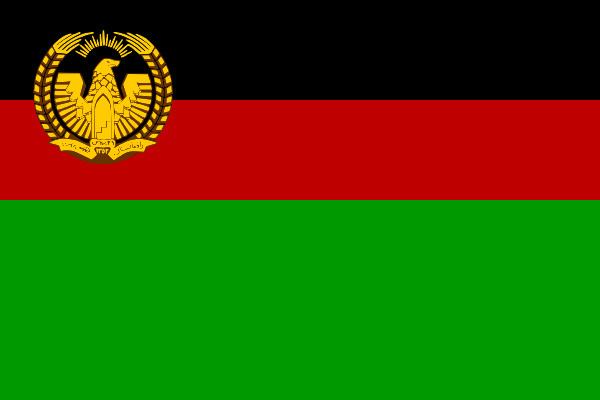Capital Kabul Religion Sunni Islam Legislature Loya Jirga Area 647,500 km² Date dissolved April 28, 1978 | Languages Pashto
Persian 1973–1978 Mohammed Daoud Khan Founded 17 July 1973 Currency Afghan afghani | |
 | ||
Government One-party presidential republic | ||
The Republic of Afghanistan (Dari: جمهوری افغانستان, Jǝmhūri Afġānistān; Pashto: د افغانستان جمهوریت, Dǝ Afġānistān Jumhūriyat) was the name of the first republic of Afghanistan, created in 1973 after Mohammed Daoud Khan deposed his cousin, King Mohammad Zahir Shah, in a non-violent coup. Daoud was known for his progressive politics and attempts to modernise the country with help from both the Soviet Union and the United States, among others.
Contents
In 1978, a military coup known as the Saur Revolution took place, instigated by the communist People's Democratic Party of Afghanistan, in which Daoud and his family were killed. The "Daoud Republic" was subsequently succeeded by the Soviet-allied Democratic Republic of Afghanistan.
The current official name of Afghanistan is Islamic Republic of Afghanistan.
Formation
In July 1973, while Mohammed Zahir Shah was in Italy undergoing eye surgery as well as therapy for lumbago, his cousin and former Prime Minister Mohammed Daoud Khan staged a coup d'état and established a republican government. Daoud Khan had been forced to resign as prime minister by Zahir Shah a decade earlier. The king abdicated the following month rather than risk an all-out civil war.
Political reforms
The same year, former Prime Minister of Afghanistan Mohammad Hashim Maiwandwal was accused of plotting a coup, though it is unclear if the plan was actually targeting the new republican government or the by then abolished monarchy. Maiwandwal was arrested and allegedly committed suicide in jail before his trial, but widespread belief says he was tortured to death.
After seizing power, President Mohammed Daoud Khan established his own political party, the National Revolutionary Party. This party became the sole focus of political activity in the country. The Loya jirga approved a new constitution establishing a presidential one-party state in January 1977, with political opponents being violently persecuted.
Rise of communism
During Daoud's presidency, relations with especially the Soviet Union eventually deteriorated. They saw his shift to a more Western-friendly leadership as dangerous, including criticism of Cuba's membership in the Non-aligned Movement and the expulsion of Soviet military and economic advisers. The suppression of political opposition furthermore turned the Soviet-backed People's Democratic Party (PDPA), an important ally in the 1973 coup against the king, against him.
In 1976, Daoud established a seven-year economic plan for the country. He started military training programs with India and commenced economic development talks with Imperial Iran. Daoud also turned his attention to oil rich Middle Eastern nations such as Saudi Arabia, Iraq and Kuwait among others for financial assistance.
Daoud had however achieved little of what he had set out to accomplish in 1978. The Afghan economy hadn't made any real progress and the Afghan standard of living had not risen. Daoud had also garnered much criticism for his single party constitution in 1977 which alienated him from his political supporters. By this time, the two main factions of the PDPA, previously locked in a power struggle, had reached a fragile agreement for reconciliation. Communist-sympathizing army officials were by then already planning a move against the government. According to Hafizullah Amin, who became Afghan head of state in 1979, the PDPA had started plotting the coup in 1976, two years before it materialized.
Saur Revolution
The PDPA seized power in a military coup in 1978 which is best known as the Saur Revolution. On April 27, troops from the military base at Kabul International Airport started to move towards the center of the capital. It took only 24 hours to consolidate power, with the rapid push including an air raid on the presidential palace and insurgent army units quickly seizing critical institutions and communication lines. Daoud and most of his family were executed the following day.
Nur Muhammad Taraki, General Secretary of the PDPA, was proclaimed Chairman of the Presidium of the Revolutionary Council and effectively succeeded Mohammed Daoud Khan as head of state. He simultaneously became head of government of the newly established Democratic Republic of Afghanistan.
